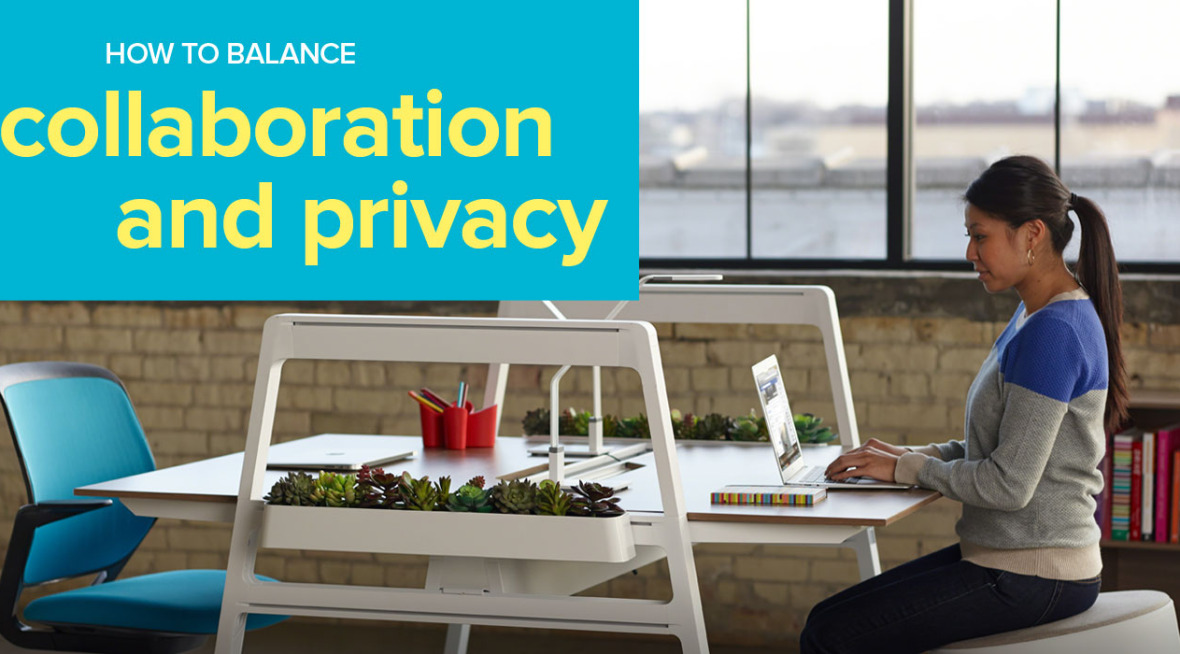
Collaboration and Privacy.
Have there ever been two words so diametrically opposed? Maybe.
But In terms of office design, the answer is a resounding no.
Swinging back-and-forth like a pendulum, these two design choices are the dominating trends that have shaped offices large and small for the last 50+ years. Unfortunately, many office plans have themselves been on the extremes of this pendulum.
The Big Room of Desks
One of the most common offenses in unbalanced office design is the dreaded Big Room of Desks. These typically feature rows and rows of desks with nothing between them but more desks (and probably cords to trip over).
need a desk with cord control? check out bivi
These types of spaces are generally looked upon as being more collaborative because most employees work within view and earshot of other employees. Though this may be an aspect that can develop a collaborative environment, just being physically near other people isn't necessarily a recipe for collaboration. What it can induce is plenty of distraction.
The Maze of Rooms
On the opposite side of the spectrum are the once-popular Maze of Rooms. These are basically comprised of long hallways with many rooms—generally private offices—lining either side.
Private Offices seem like a great idea, and indeed are in many cases, but they can stymie collaborative efforts by not offering enough space to work together on projects. In addition, they can also make it more difficult to know what is going on in team environments, decreasing transparency on all levels. Though privacy is an important aspect to any work environment, too much privacy might get in the way of new ideas and teamwork you're trying to foster.
Balancing Collaboration with Privacy
Obviously, neither of those options are incorrect in and of themselves, but problems arise when either is used haphazardly or applied without balance.
need help planning your space? talk with one of our designers
In a recent issue of Steelcase 360, global energy company TAQA developed a new headquarters that attempted to balance both extremes into a finely-tuned and efficient workplace. The ideas they implemented show some of the many different ways companies can implement in order to combine the best of both worlds.
Here are some things you can try:
- Install phone rooms to help staff maintain private conversations
- Add numerous meeting rooms to help keep in-person meetings confidential, while not disrupting other office staff
- Increase the number of shared environments to help staff collaborate near their workstations
- Increase transparency by reducing the number of private offices
- Install smart printing stations to keep confidential documents private
Does your office layout balance collaboration with privacy?
